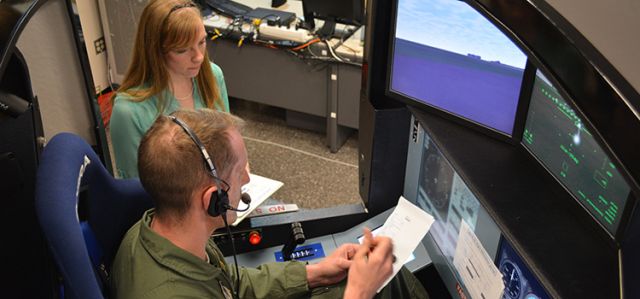Document Type
Conference Paper
Publication Date
1-1998
Publication Source
Space Technology and Applications International Forum
Abstract
Research has been conducted to observe the operation of a capillary pumped loop (CPL) in both normal and low gravity environments in order to ascertain the causes of device failure. The failures of capillary pumped heat transport devices in low gravity; specifically; evaporator dryout, are not understood and the available data for analyzing the failures is incomplete.
To observe failure in these devices an idealized experimental CPL was configured for testing in both a normal-gravity and a low-gravity environment. The experimental test loop was constructed completely of Pyrex tubing to allow for visualization of system operations. Heat was added to the liquid on the evaporator side of the loop using resistance heaters and removed on the condenser side via forced convection of ambient air. A video camera was used to record the behavior of both the condenser and the evaporator menisci simultaneously.
Low-gravity experiments were performed during the Microgravity Science Laboratory (MSL-1) mission performed onboard the Space Shuttle Columbia in July of 1997. During the MSL-1 mission, a failure mechanism, heretofore unreported, was observed. In every experiment performed a slug of liquid would form at the transition from a bend to a straight run in the vapor line. Ultimately, this liquid slug prevents the flow of vapor to the condenser causing the condenser to eventually dryout. After condenser dryout, liquid is no longer fed into the evaporator and it, too, will dry out resulting in device failure. An analysis is presented to illustrate the inevitable formation of such liquid slugs in CPL devices in low gravity.
Inclusive pages
471-477
ISBN/ISSN
0094-243X
Document Version
Published Version
Copyright
Copyright © 1998, American Institute of Physics
Publisher
American Institute of Physics
Volume
1
Place of Publication
Albuquerque, NM
Peer Reviewed
yes
eCommons Citation
Allen, Jeffrey S.; Hallinan, Kevin P.; and Lekan, Jack, "A Study of the Fundamental Operations of a Capillary Driven Heat Transfer Device in Both Normal and Low Gravity Part 1-Liquid Slug Formation in Low Gravity" (1998). Mechanical and Aerospace Engineering Faculty Publications. 38.
https://ecommons.udayton.edu/mee_fac_pub/38




Comments
This document is provided for download in compliance with the publisher's policy on self-archiving. Permission documentation is on file.